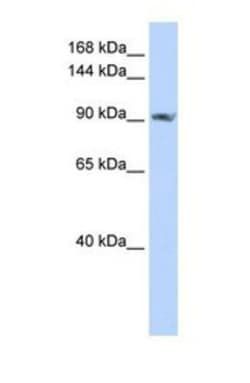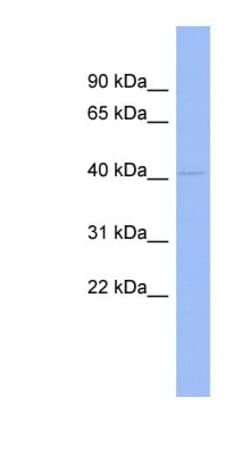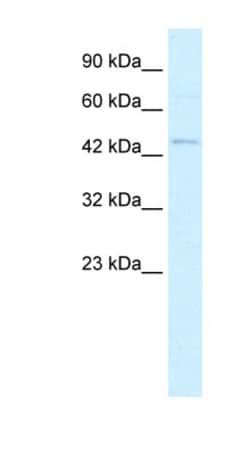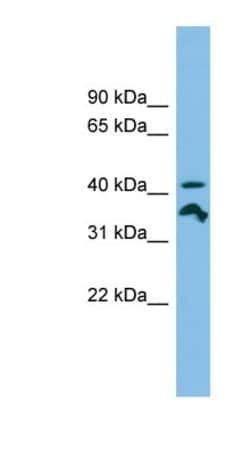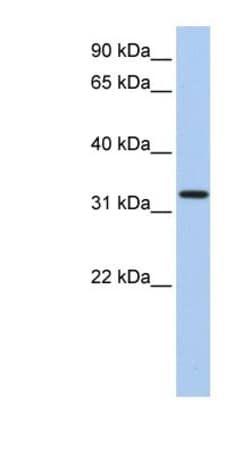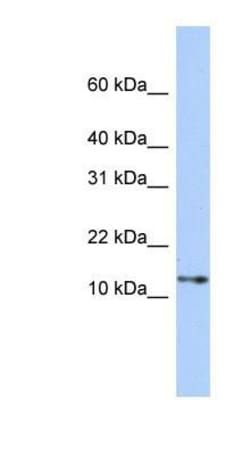RRAGC Antibody, Novus Biologicals™
Manufacturer: Novus Biologicals
Select a Size
| Pack Size | SKU | Availability | Price |
|---|---|---|---|
| Each of 1 | NBP156670-Each-of-1 | In Stock | ₹ 43,387.50 |
NBP156670 - Each of 1
In Stock
Quantity
1
Base Price: ₹ 43,387.50
GST (18%): ₹ 7,809.75
Total Price: ₹ 51,197.25
Antigen
RRAGC
Classification
Polyclonal
Conjugate
Unconjugated
Formulation
PBS, 2% Sucrose with 0.09% Sodium Azide
Gene Alias
FLJ13311, GTPase-interacting protein 2, GTR2, Rag C, Rag C protein, RAGC, Ras-related GTP binding C, ras-related GTP-binding protein C, TIB929
Host Species
Rabbit
Purification Method
Affinity purified
Regulatory Status
RUO
Primary or Secondary
Primary
Test Specificity
Expected identity based on immunogen sequence: Xenopus: 100%; Bovine: 100%; Chicken: 100%; Canine: 100%; Equine: 100%; Human: 100%; Mouse: 100%; Pig: 100%; Rabbit: 100%; Rat: 100%; Sheep: 100%; Zebrafish: 92%.
Target Species
Human, Mouse, Rat, Bovine, Canine, Equine, Guinea Pig, Rabbit, Sheep, Zebrafish
Isotype
IgG
Applications
Western Blot
Concentration
0.5 mg/ml
Dilution
Western Blot 1.0 ug/ml
Gene Accession No.
Q9HB90
Gene Symbols
RRAGC
Immunogen
Synthetic peptides corresponding to RRAGC (Ras-related GTP binding C) The peptide sequence was selected from the N terminal of RRAGC)(50ug). Peptide sequence RSGKSSIQKVVFHKMSPNETLFLESTNKIYKDDISNSSFVNFQIWDFPGQ.
Quantity
100 μL
Research Discipline
Apoptosis, mTOR Pathway
Gene ID (Entrez)
64121
Reconstitution
Centrifuge the vial of lyoph antibody at 12,000 x g for 20 seconds. Add 50μL of distilled water. Vortex followed by centrifuge again to pellet the solution.Final concentration is 1mg/mL in PBS buffer.
Content And Storage
Store at 4°C short term. Aliquot and store at -20°C long term. Avoid freeze-thaw cycles.
Related Products
Description
- RRAGC Polyclonal specifically detects RRAGC in Human samples
- It is validated for Western Blot.




